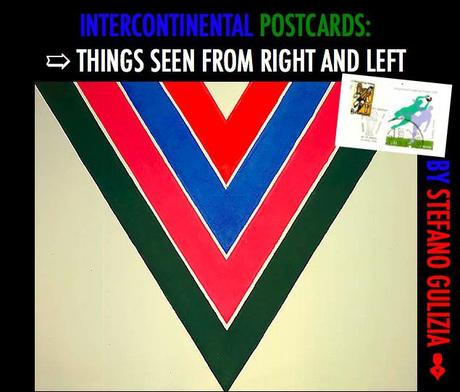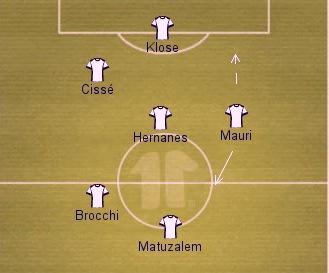
Since beginnings cast a practical spell, like a slab of musique concrète of the late 1940s, which chimes with surrealist practice, I recently (re-)watched the opening fixture of the Serie A between Lazio and Milan with two aims in mind: a) disconnect primary-coloured rectangles and white background; b) translate musical structures into plastic form. In other words, I wanted to describe on musical principles the workings of two midfields, Milan’s notoriously belligerent 4—3—1—2, a staple formation in Italy despite all the nagging discomfort of its narrowness, and Lazio’s elongated 4—2—3—1, with its symmetrical bedfellows. These assertions, I thought, had remained untested. An arbitrary cut-off point, my goal was unrealistic and likely to find itself confronted with a baffling variety of choices. (Meanwhile, the fans in the terraces of San Siro, filled by retired factory workers, school thugs, all-purpose intellectuals and malcontents, looked like nothing that has yet existed.) Choices, however, are only as baffling as you want to make them, and they are usually made up by quite straightforward, deterministic strategies—soccer is like a John Cage composition, a space of potential sound, open to whatever noise might drift in.
Soon enough music and sound began to ruin onto each other in a world far from the flowing improvisations of a Jerry Roll Morton, but less convincing than Baudelaire’s dream of correspondences. Finally, as I realized that nobody really wanted to close down the respective sources of passing and both teams were quite happy to sit deep and invite pressure by simply committing seven players at a time to a defensive stance, cracks in my theory started to appear. I was reminded of Duchamp’s Rotoreliefs—kinetic illusions activated by a turntable—and especially of the abstract expressionism of Moholy-Nagy’s visionary use of ‘sound handwriting’ created by the phonograph. Brocchi’s performance, a sloppy yet cohesive paradigm involving a small midfield orchestra and invisible pigment-slathered sylphs, also seemed significant. Mauri’s amphibian 12’34” movements, on the other hand, while not very effective from a defensive point of view, intuitively drifted within a graphic score intended to explore the shifts between an extremely lopsided ’2—3′ at the heart of Lazio’s module and a more conventional, diamond-like, ’3—1′ within the same squad.
Was Lazio after a pitched chromatic gradation—the closest imaginable equivalent to the experience of listening Stockhausen? What were Massimiliano Allegri and Edy Reja hoping to trigger in their audiences by means of their (roughly) calibrated experiments in shape, colour and sound? Didn’t the synaesthetic mix achieve the overall impression of the psychedelic movement in the 1960s?

What started as a minimalist exploration of music and extended plastic forms in the socce pitch, begins to emerge as a real, fascinating problem of geopolitics. If you show the chalkboard above in Holland, nobody would doubt to be looking at a classic, however left-leaning, 4—2—3—1 formation. Show it in Brazil, and everybody, untouched by the previous reasoning, would declare that all the huffing and puffing of players in the positions of Brocchi and Mauri merely shows a midfield diamond in the making. Seen form left and right, the twelve semitones of this footballing octave change; geopolitical concerns dominate soccer’s immersive architectural space. Suggestive as it is, this dilemma never quite acknowledges its relative lack of radical ideas.
Just as Erik Satie (who once declared a desire for his music to resemble perfume), Reja and Allegri still work on classical instrumentation. Pieces like Things Seen from Right and Left (Without Spectacles), or Chapters Turned in All Directions clearly imply that Satie was mimicking in music the smashed perspective of Cubism, but they were essentially moody miniatures for piano and violin. Likewise, you can bring a gramophone or a turntable in either Lazio’s or Milan’s orchestra, but their mechanical sound would be jarring in what is otherwise a soccer’s fairly conventional tone poem. ♦

